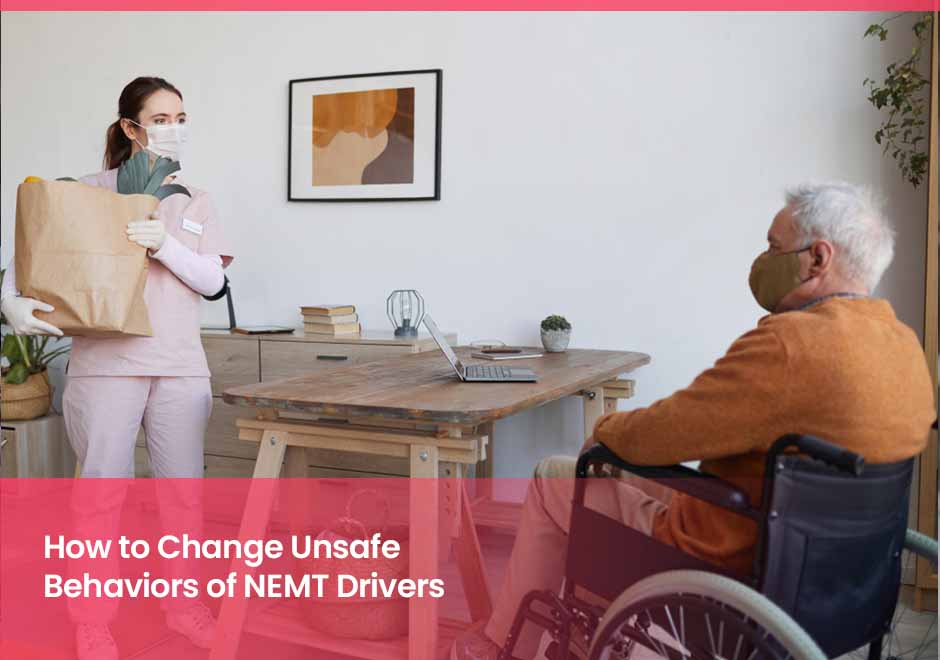New At Safr Care
How to Change Unsafe Behaviors of NEMT Drivers

Driving NEMT vehicles is not the same as driving a regular car or taxi. As a non-emergency medical transportation (NEMT) driver, there are many different factors and situations that will arise that are unique to the transportation industry that must be handled by following strict procedures. The impact of the drivers actions can have a detrimental effect on the patients riding in the NEMT service. WIth such a huge burden, it is imperative that these drivers are properly trained to handle specific situations with a robust training program. DRIVER TASKS Drivers of NEMT vehicles are required to handle multiple tasks on each trip, including but not limited to: Driving the vehicle with proper driving techniques; Loading and unloading the passenger and equipment; Passenger safety and assistance; Mobility device securement and assistance; Customer service; and Route planning Each task must have a Standard Operating Procedure (SOP) so the driver knows exactly what to do in each situation (including knowing the risks associated with not doing a task according to the SOPs). With well over 150 tasks that a driver must do on a daily basis, it is imperative that a well-versed training program be implemented to ensure drivers are acting in a compliant and safe manner. Having such a program will help ensure that drivers are made aware of all the dangers, and do NOT cut corners. WHAT ARE UNSAFE BEHAVIORS? Unsafe behaviors are any actions done by the drivers that can have a detrimental impact on the riders involved. Unsafe behaviors can include drivers who break driving laws by driving too fast, or driving in a haphazard / uncomfortable way that can cause patients to feel unsafe, or taking routes that are shortcuts or out of the way. Other unsafe behaviors can include not having the proper equipment to secure passengers properly in the NEMT vehicles, or a lack of understanding on how to operate the equipment or vehicles. Drivers of NEMT that are not credentialed in First Aid, CPR, and Passenger Assistance are classified as unsafe drivers. HOW TO AVOID SUCH BEHAVIORS As mentioned previously, NEMT providers must create SOPs that must all be followed. These SOPs are the guidelines that describe exactly (step-by-step) what duty a driver must perform in every situation. For instance, when it comes to securing a wheelchair, there must be a set of written procedures that the driver must follow. With a step-by-step guide and training, the driver will understand the risks of not properly securing a patient and thus their wheelchair can lead to serious injury. Properly securing the wheelchair for a patient will help to ensure that the driver performs in an appropriate and proper way. With the proper training and a solid list of SOPs, NEMT drivers will have a better grasp of their duties, which should result in more satisfied patients. Drivers must receive routine, updated training to ensure that they are current with all tasks they must perform for each ride, including how they need to be done. This leads to better safety and peace of mind for everyone involved.

